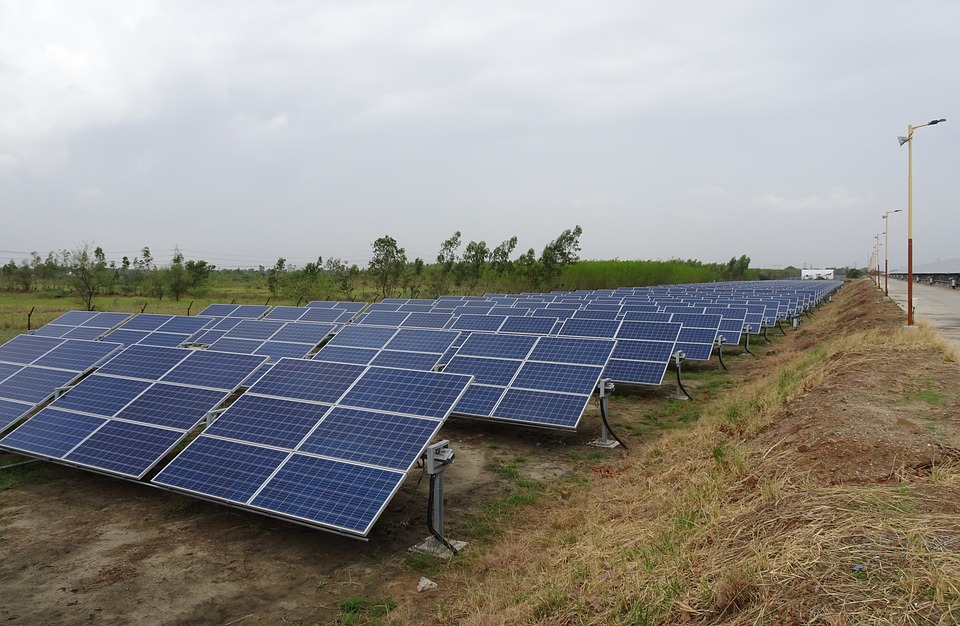[ad_1]
The Power of Policy: How Governments are Shaping Renewable Energy Markets
Introduction:
In recent years, there has been a significant shift towards renewable energy sources as countries around the world strive to reduce their carbon footprint and combat climate change. Governments have been instrumental in driving this transition by implementing policies and regulations that promote the development and use of renewable energy technologies. These policies have shaped the renewable energy market, encouraging investments and driving technological innovations. In this article, we will explore the power of policy and how governments are crucial players in shaping the renewable energy landscape.
1. The Need for Policy Intervention:
1.1 Climate Change Imperative:
The urgency to tackle climate change has been the driving force behind government intervention in renewable energy markets. The increasing global average temperature, melting ice caps, and extreme weather events serve as stark reminders of the need to transition towards cleaner energy sources. Policymakers recognize the long-term risks associated with dependence on fossil fuels and have aligned themselves with the goals of the Paris Agreement to limit global warming to below 2°C.
1.2 Economic Opportunities:
While combatting climate change is the primary motivation, governments also acknowledge the economic opportunities that renewable energy presents. Shifting towards renewables can stimulate job growth, attract investments, and enhance energy security by diversifying fuel sources. Policymakers view renewable energy as a win-win proposition, enabling sustainable economic growth while safeguarding the environment.
2. Policy Mechanisms:
2.1 Renewable Portfolio Standards (RPS):
RPS mandates require utilities to source a certain percentage of their electricity from renewable sources. By setting renewable energy targets, governments promote the integration of renewables into the mainstream energy mix. RPS helps create a stable market for renewable energy technologies, incentivizing project developers and attracting investments.
2.2 Feed-in Tariffs (FiTs):
Feed-in tariffs provide long-term fixed payments to renewable energy producers for the electricity they generate. These tariffs are often above the market rates and guaranteed for a specific period, ensuring a predictable and stable revenue stream. FiTs encourage the adoption of renewable energy technologies by bridging the gap between the higher initial costs of renewable projects and the electricity market prices.
2.3 Tax Incentives and Subsidies:
Governments provide tax incentives and subsidies to make renewable energy projects financially viable and competitive. These mechanisms can include investment tax credits, accelerated depreciation, and grants that reduce the upfront costs of renewable energy installations. By providing financial support, policymakers aim to level the playing field and stimulate private investments in the renewable energy sector.
2.4 Carbon Pricing:
Carbon pricing mechanisms, such as carbon taxes and cap-and-trade systems, impose a financial cost on carbon emissions. By placing a price on greenhouse gas emissions, governments provide economic incentives for polluting industries to transition to cleaner energy sources. Carbon pricing mechanisms also generate revenue that can be reinvested into renewable energy projects.
3. Impact on Renewable Market:
3.1 Market Growth:
The power of policy in shaping renewable energy markets is evident from the significant growth witnessed in the sector. Countries with robust renewable energy policies have experienced a surge in installed renewable capacity and generation. It encourages innovation and attracts investments, driving down costs and making renewables more economically viable.
3.2 Technology Development:
With policy support, renewable energy technologies have advanced rapidly. Government-backed research and development initiatives have played a vital role in improving the efficiency of solar panels, wind turbines, and energy storage systems. Policy interventions have encouraged the adoption of cleaner technologies, resulting in a wider range of options and increased competition, leading to cost reductions.
3.3 Local Job Creation:
Policies promoting renewable energy have stimulated job growth, especially in the manufacturing, construction, and maintenance sectors. The renewable energy industry has quickly become a significant employer, offering opportunities for engineers, technicians, installers, and project managers. Government support has helped create a robust workforce, driving economic growth and social benefits.
FAQs:
Q1. Are renewable energy policies consistent across countries?
A1. No, renewable energy policies vary significantly across countries. Factors such as available resources, political will, and socio-economic conditions influence policy implementation.
Q2. Do renewable energy policies only focus on electricity generation?
A2. While electricity generation is a primary focus, policies increasingly cover other sectors such as transportation, heating, and cooling. Governments are embracing a holistic approach to decarbonize all energy sectors.
Q3. How do policies address barriers to renewable energy adoption?
A3. Policies target barriers such as high upfront costs, grid integration challenges, and fossil fuel subsidies. Financial incentives, regulatory frameworks, and research support help overcome these barriers.
Q4. Do policies prioritize specific renewable technologies?
A4. Policies usually set technology-neutral goals, allocating targets to different renewable sources proportionate to their potential contribution. However, some policies may prioritize certain technologies depending on local conditions.
Q5. Can policy shifts impact investor confidence in renewable energy?
A5. Yes, policy instability or sudden shifts can disrupt investor confidence and slow down renewable energy investments. Governments need to provide policy certainty and long-term planning to maintain investor confidence.
Conclusion:
The power of policy in shaping renewable energy markets cannot be understated. Governments worldwide are recognizing the urgent need to transition to cleaner energy sources and are implementing policies that promote renewables. Through mechanisms like Renewable Portfolio Standards, Feed-in Tariffs, tax incentives, and carbon pricing, governments provide the necessary financial and regulatory support. As a result, the renewable energy market has grown rapidly, technologies have advanced, and job opportunities have increased. The role of governments will continue to be crucial in driving the renewable energy revolution and combating climate change.
[ad_2]



